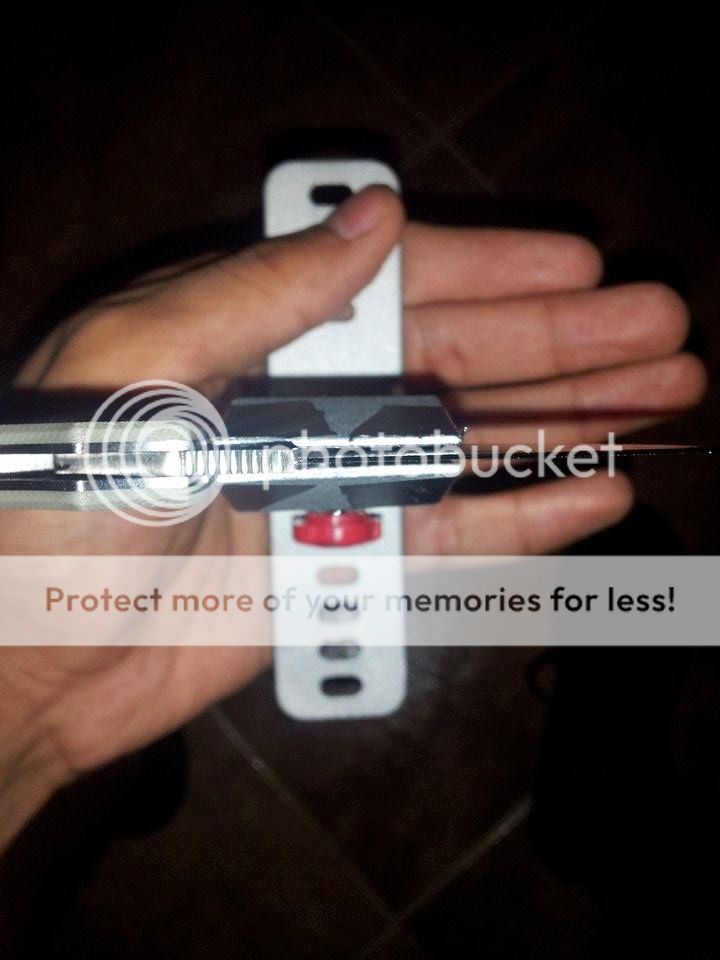- Joined
- Aug 3, 2013
- Messages
- 592
So I bought a Spyderco Dragonfly G10 a while ago, and after some extensive EDC carry, it needs sharpening, I bought a Lansky today, and when I mounted the Dragonfly on the lansky, the clamp does not bite down on the blade evenly, this is due to the blade being FFG and it gets thinner towards the tip, anyone here have any tips on sharpening the Dragonfly on the Lansky?
I decided to clamp the dragonfly like this due to this being the only part of the blade with a flat surface area but I feel like its going to cut an uneven edge on the blade.

I know I can easily test it out myself and see how it works, but I want to take precaution and take advice here to prevent unnecessary removal of extra metal. I have the Stone system not the diamond so it's a bit slower.
Here's a pic of the sharpied edge after about 30 seconds sharpening on the Coarse stone, it seems about right, its only cutting in the middle, but I believe thats due to my failed attempt at free-handing earlier and put a slightly convexed edge on it.
Any help is greatly appreciated
I decided to clamp the dragonfly like this due to this being the only part of the blade with a flat surface area but I feel like its going to cut an uneven edge on the blade.


I know I can easily test it out myself and see how it works, but I want to take precaution and take advice here to prevent unnecessary removal of extra metal. I have the Stone system not the diamond so it's a bit slower.
Here's a pic of the sharpied edge after about 30 seconds sharpening on the Coarse stone, it seems about right, its only cutting in the middle, but I believe thats due to my failed attempt at free-handing earlier and put a slightly convexed edge on it.

Any help is greatly appreciated
